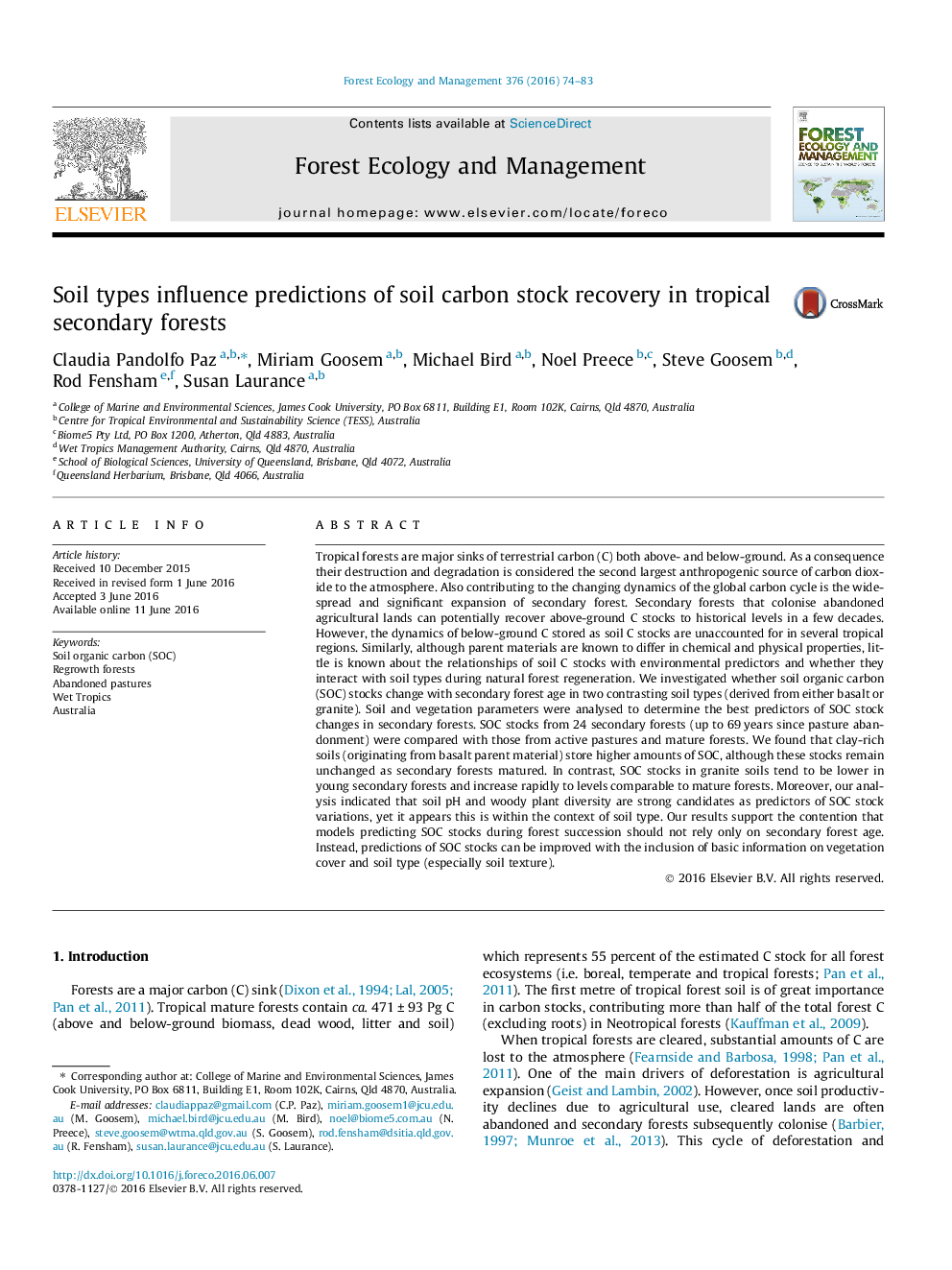| کد مقاله | کد نشریه | سال انتشار | مقاله انگلیسی | نسخه تمام متن |
|---|---|---|---|---|
| 6542100 | 159145 | 2016 | 10 صفحه PDF | دانلود رایگان |
عنوان انگلیسی مقاله ISI
Soil types influence predictions of soil carbon stock recovery in tropical secondary forests
ترجمه فارسی عنوان
انواع خاک ها بر پیش بینی های بازیافت کربن خاک در جنگل های ثانویه گرمسیری تاثیر می گذارند
دانلود مقاله + سفارش ترجمه
دانلود مقاله ISI انگلیسی
رایگان برای ایرانیان
کلمات کلیدی
موضوعات مرتبط
علوم زیستی و بیوفناوری
علوم کشاورزی و بیولوژیک
بوم شناسی، تکامل، رفتار و سامانه شناسی
چکیده انگلیسی
Tropical forests are major sinks of terrestrial carbon (C) both above- and below-ground. As a consequence their destruction and degradation is considered the second largest anthropogenic source of carbon dioxide to the atmosphere. Also contributing to the changing dynamics of the global carbon cycle is the widespread and significant expansion of secondary forest. Secondary forests that colonise abandoned agricultural lands can potentially recover above-ground C stocks to historical levels in a few decades. However, the dynamics of below-ground C stored as soil C stocks are unaccounted for in several tropical regions. Similarly, although parent materials are known to differ in chemical and physical properties, little is known about the relationships of soil C stocks with environmental predictors and whether they interact with soil types during natural forest regeneration. We investigated whether soil organic carbon (SOC) stocks change with secondary forest age in two contrasting soil types (derived from either basalt or granite). Soil and vegetation parameters were analysed to determine the best predictors of SOC stock changes in secondary forests. SOC stocks from 24 secondary forests (up to 69Â years since pasture abandonment) were compared with those from active pastures and mature forests. We found that clay-rich soils (originating from basalt parent material) store higher amounts of SOC, although these stocks remain unchanged as secondary forests matured. In contrast, SOC stocks in granite soils tend to be lower in young secondary forests and increase rapidly to levels comparable to mature forests. Moreover, our analysis indicated that soil pH and woody plant diversity are strong candidates as predictors of SOC stock variations, yet it appears this is within the context of soil type. Our results support the contention that models predicting SOC stocks during forest succession should not rely only on secondary forest age. Instead, predictions of SOC stocks can be improved with the inclusion of basic information on vegetation cover and soil type (especially soil texture).
ناشر
Database: Elsevier - ScienceDirect (ساینس دایرکت)
Journal: Forest Ecology and Management - Volume 376, 15 September 2016, Pages 74-83
Journal: Forest Ecology and Management - Volume 376, 15 September 2016, Pages 74-83
نویسندگان
Claudia Pandolfo Paz, Miriam Goosem, Michael Bird, Noel Preece, Steve Goosem, Rod Fensham, Susan Laurance,
